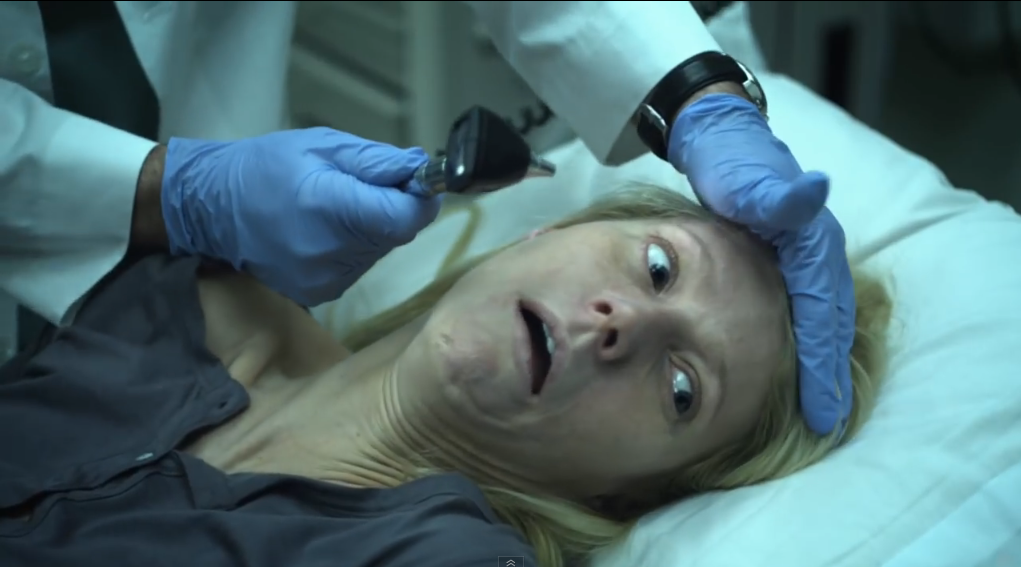- A coronavirus outbreak that originated in Wuhan, China, has killed at least 200 people and infected more than 9,700 since December.
- In the weeks since public-health officials reported the first coronavirus case, many people have searched for and watched the 2011 movie “Contagion.”
- The film depicts a fictional worldwide pandemic that spreads from animals to people in Hong Kong, then kills tens of millions worldwide.
- Here’s how the pandemic from the movie “Contagion” differs from the current Wuhan coronavirus outbreak.
- Visit Business Insider’s homepage for more stories.
The 2011 film “Contagion” opens to the sound of a woman coughing. The universal sound of sickness, her cough is heavy and full of mucous. It comes from Beth Emhoff, played by Gwyneth Paltrow, who is patient zero in a pandemic that kills at least 26 million people worldwide in less than a month.
The fictional pandemic in “Contagion,” called MEV-1 in the movie, is a hybrid of influenza and the deadly Nipah virus that emerged in Malaysia in the late 1990s.
But because of the real and growing coronavirus outbreak, Google searches for “Contagion” skyrocketed last week. The number of Twitter users mentioning the movie in relation to the current outbreak did as well, and on January 28, “Contagion” was on iTunes’ top-10 list of rented movies.
There are many stark differences between the spread of MEV-1 in the movie and the current coronavirus outbreak. Importantly, the coronavirus isn’t currently considered a pandemic, though the World Health Organization (WHO) did declare it a global public-health emergency on Thursday.
Since December 31, the coronavirus (whose scientific name is 2019-nCoV) has killed at least 200 people and infected more than 9,000 across 20 countries, including the US.
Health officials have documented person-to-person transmission of the virus in China, Japan, and recently the United States, but the Centers for Disease Control and Prevention (CDC) says "the immediate health risk from 2019-nCoV to the general American public is considered low."
Still, there are a few notable parallels between the scenario in "Contagion" and current events. For one, the movie's MEV-1 virus is a zoonotic disease, meaning it jumped from animals to people. In the film, it spreads from a bat to a pig sold at an outdoor Chinese market, before hopping to Emhoff. According to experts, the novel coronavirus is also zoonotic disease that likely started in bats and infected people via an intermediary animal sold at a wet market in the central Chinese city of Wuhan.
Here are all the ways "Contagion" differs from reality.
The movie's ending scene is revealed to be "day one" of the MEV-1 outbreak. It shows a logging company disturbing a bat, which flies out of the forest and into a pig farm, carrying a piece of banana.

The bat drops the fruit (presumably infected with the virus) and a piglet eats it. The pig is later sold to a wet market vendor, who then sells the butchered swine to a casino restaurant in Hong Kong. The chef prepares the pork before shaking hands with Emhoff, infecting her and kick-starting the pandemic.
This is very akin to the way the Nipah virus spread to people in Malaysia and India.
The 2003 SARS epidemic, which killed 774 people, started in a similar manner. Chinese horseshoe bats passed the virus to civets sold at a wet market. People caught it from the civets.
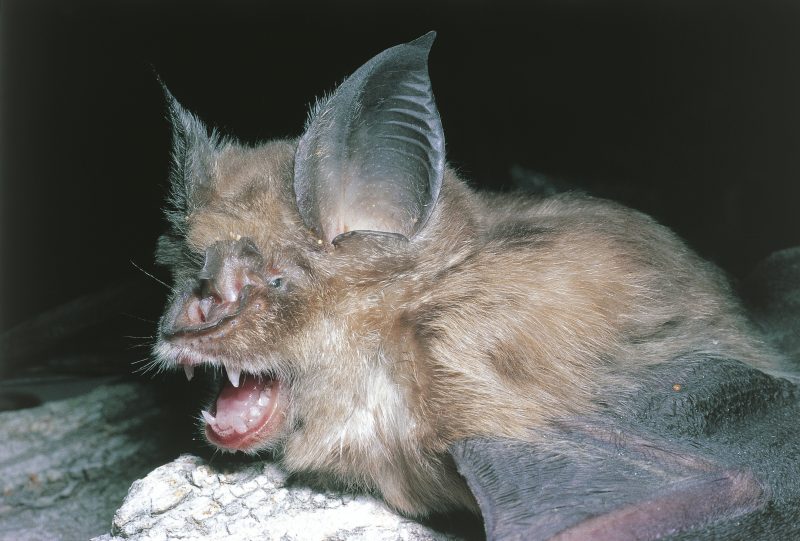
In the case of the new coronavirus, the process was likely similar.
"There's an indication that it's a bat virus, spread in association with wet markets," Vincent Munster, a scientist at Rocky Mountain Laboratories, previously told Business Insider.
More research is needed in the case of coronavirus to determine which animal served as the virus' intermediary host. One group of scientists reported it could be snakes.
The opening scenes of "Contagion" depict day two of the virus' spread. A man in Hong Kong, China is the first to die from the illness, but a man in Tokyo and a woman in London die, too.
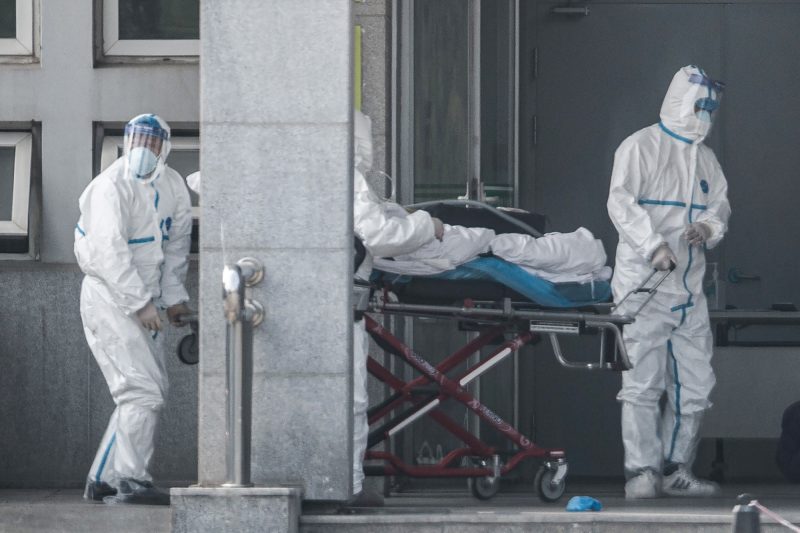
By contrast, the first person to die of the new coronavirus, a 61-year-old Wuhan resident, didn't die until 11 days after the first case was reported. The virus also didn't spread outside of China until January 13, two weeks into the outbreak.
Cases have been documented in 20 other countries beyond China.
By day 29 of the pandemic in the movie, 26 million people worldwide were dead. Thursday was day 29 of the coronavirus outbreak, and more than 210 people have died.

All of the people who have died from the coronavirus live in China.
In "Contagion," Emhoff's husband, played by Matt Damon, survives the pandemic because he is immune to the fictional virus.
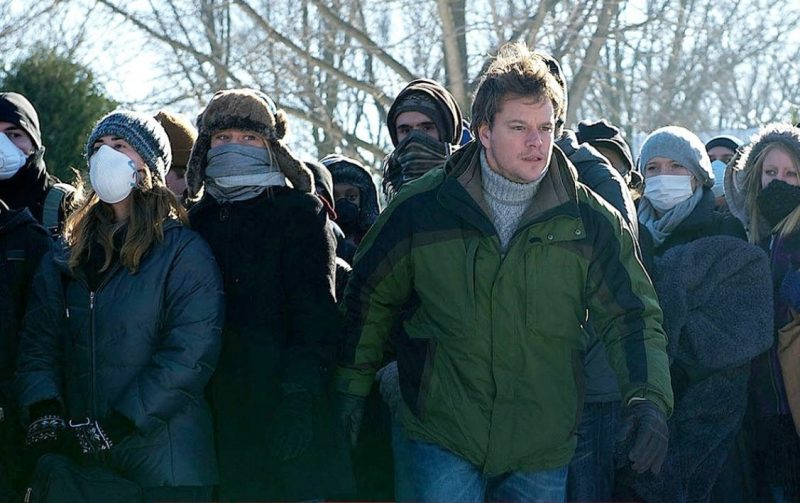
But the concept of individual immunity doesn't apply in the case of coronaviruses, Neil Ferguson, a disease outbreak scientist at Imperial College London, told The Telegraph.
"[With the] flu virus you become immune, but there are lots of different viruses circulating," he said. "Coronaviruses don't evolve in the same way as flu with lots of different strains, but equally our body doesn't generate very good immunity."
In the movie, the MEV-1 virus is highly contagious between people.

Paltrow's character infects the Tokyo man who died on day two after blowing on dice he holds in his hands at a casino. She also passes it to a person who cleans up a glass she'd used and another who picks up her phone.
In the case of 2019-nCoV, the coronavirus can only survive on surfaces for "a range of hours," according to Nancy Messonier, director of the CDC's National Center for Immunization and Respiratory Diseases.
"There is likely a very, very, very low, if any, risk of spread from products or packaging that is shipped over a period of days or weeks at ambient temperatures," Messonier said in a press conference on Monday.
The coronavirus spreads via coughing, sneezing, or close contact between infected and healthy people.
In "Contagion," many infected patients experience seizures before dying. Wuhan coronavirus patients, by contrast, get coughs, fever, and pneumonialike symptoms.
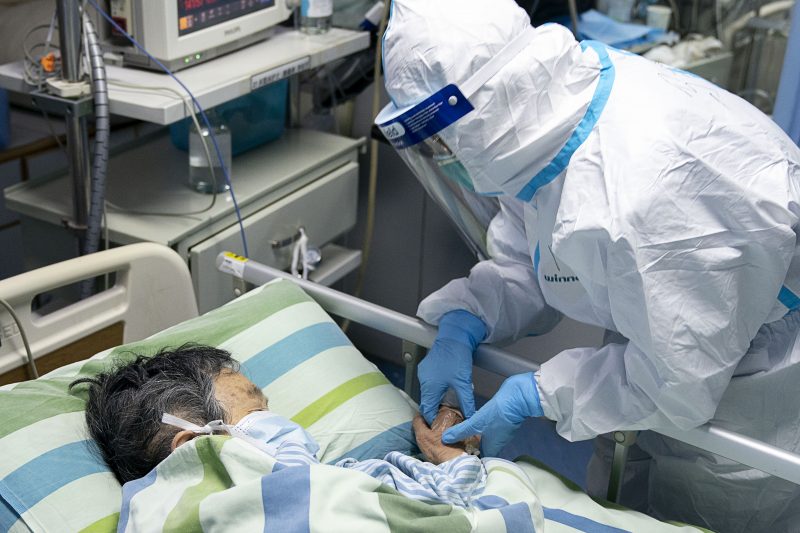
MEV-1 affects everyone equally in the movie - it kills the Emhoffs' son as quickly as it kills Beth.
But a study of 41 Wuhan coronavirus cases reported that the median age of those who have died is around 75. Many of those individuals had other health issues like high blood pressure, diabetes, and Parkinson's disease.
A second study of 99 coronavirus cases, published Thursday in the journal The Lancet, revealed that the average age of infected patients was 55.5.
According to Chinese researchers in Hong Kong, one person with the new coronavirus can pass it to three to five others — a statistic called the virus' R0 value.
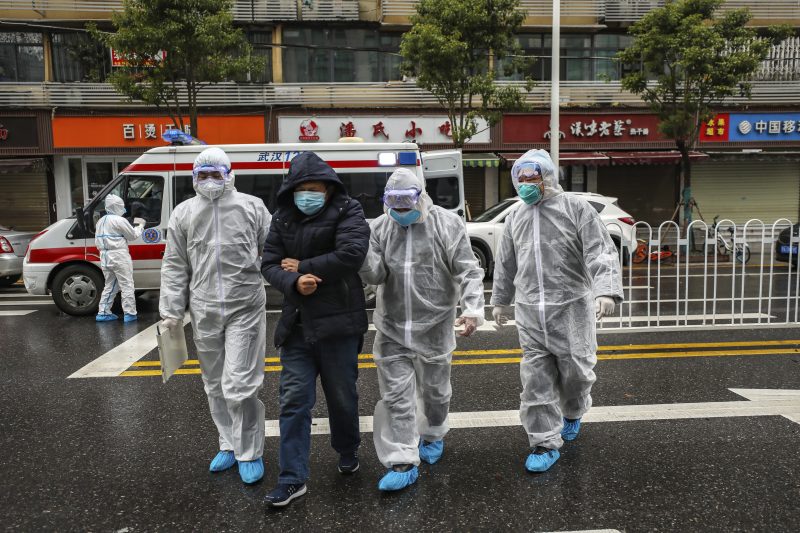
The researchers' study has not yet been peer-reviewed, however. Officials at the WHO, however, estimate that the coronavirus' R0 value is between 1.4 and 2.5 people.
On day six of the movie's MEV-1 pandemic, doctors discuss what the virus' R0 value might be.
Fictional officials at the CDC and WHO in the movie are able to identify Emhoff as patient zero of the MEV-1 pandemic. But patient zero of the coronavirus outbreak has yet to be identified.

On December 31, Chinese officials alerted the WHO to several cases of an unknown pneumonia-like virus in Wuhan. By the next day, the number of cases had jumped to 41, so it's unclear which patient first contracted the virus.
No infected patients in "Contagion" recover from the disease. But so far, 143 people in China, Japan, and Australia have recovered from the coronavirus.

According to Todd Ellerin, a doctor and contributing writer at Harvard Health Publishing, "many people recover within a few days" from the coronavirus.
Adrian Hyzler, chief medical officer at Healix International, previously told Business Insider that children, elderly people, pregnant women, and those who are immuno-compromised are more susceptible to the coronavirus' most severe complications.
A fictional blogger in the movie, played by Jude Law, spreads misinformation, claiming that the MEV-1 virus was manufactured by drug companies to turn a profit.
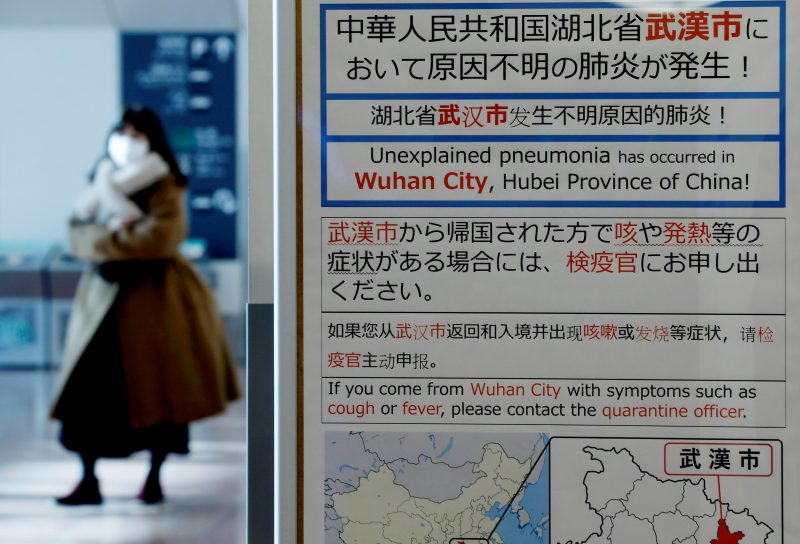
One homeland-security agent in the movie also wonders whether the virus is a terrorist weapon. Neither of those theories turn out to hold water.
Misinformation has spread during the current outbreak as well - oregano oil will not cure it, nor will drinking bleach.
The scenes in "Contagion" in which doctors identify similarities between the MEV-1 virus' genetic code and DNA from bats and pigs are pretty realistic.
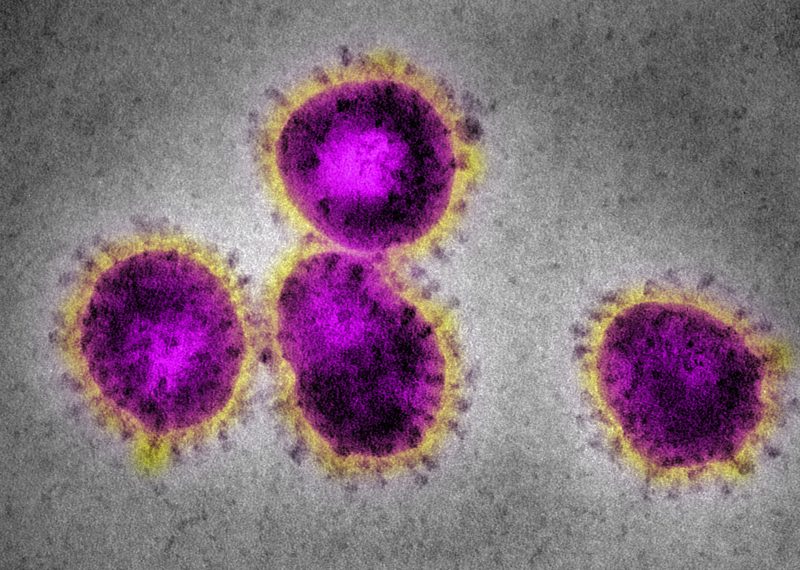
The genetic code of 2019-nCoV virus has been mapped by scientists in multiple countries. The new coronavirus shares 80% of its genome with the coronavirus that caused SARS and also overlaps with other coronaviruses found in bats.
Chinese public-health experts worked to quickly share that genetic information with researchers around the globe so that scientists could analyze how the illness is spreading and mutating, and which animals it came from.
Doctors in the movie say a mutated strain of the MEV-1 virus killed hundreds of thousands of people on the African continent.

So far, 2019-nCoV has not mutated like that, though health experts say the virus has the potential to mutate.
Currently, more than 50 million people across 16 Chinese cities are under some type of quarantine or travel restriction.

Tedros Adhanom Ghebreyesus, Director-General of the WHO, said on January 22 that efforts to quarantine cities could help Chinese authorities control the virus' spread and "minimize the chances of this outbreak spreading internationally."
In "Contagion," the CDC attempts to quarantine the city of Chicago; the Emhoffs' home town of Edina, Minnesota; the Minnesota-Wisconsin border; and other places in the US.
In "Contagion," public-health officials trace the virus' movement between infected people and those with whom they had close contact. This method, called contact tracing, is real and used by epidemiologists to trace outbreaks.
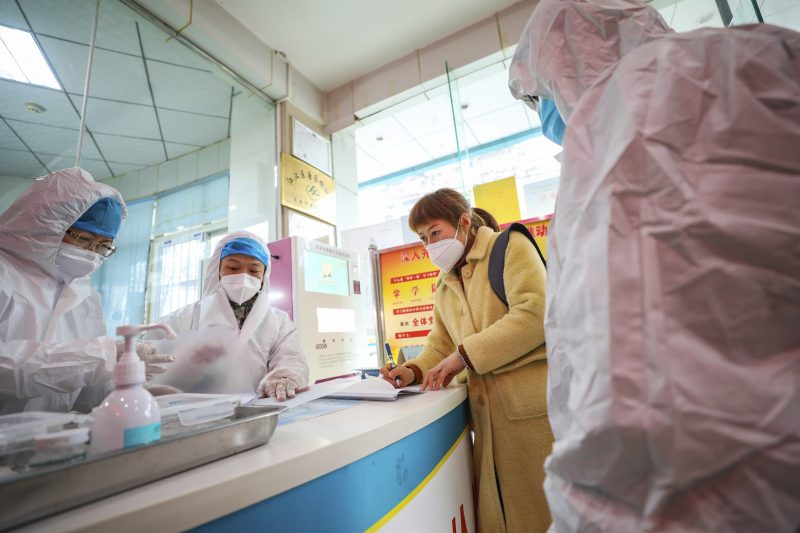
The WHO defines contact tracing as the identification and follow-up of people who may have come into contact with a person infected with a virus.
The biggest inaccuracy in the movie "Contagion" is how quickly scientists are able to develop and produce a vaccine.
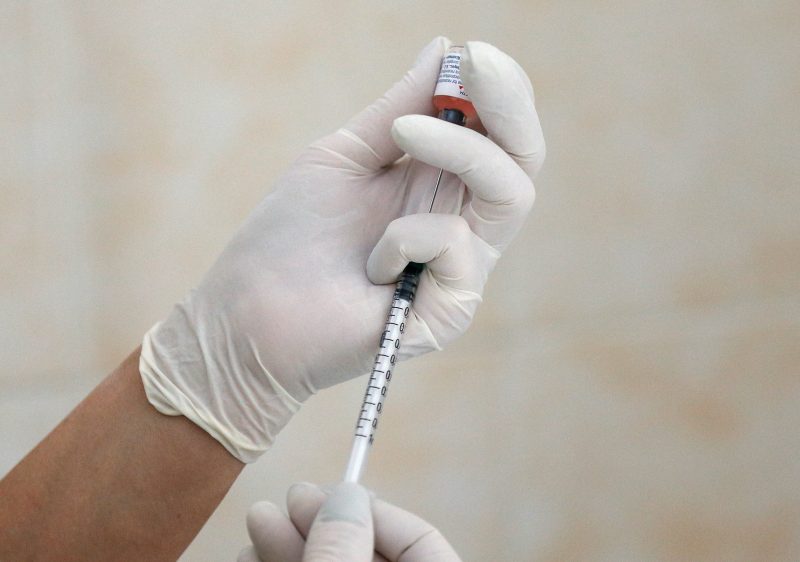
Researchers in "Contagion" are able to produce and distribute a small quantity of a vaccine in just 90 days.
But Munster said that "if Wuhan were to explode, a vaccine best-case scenario is three-quarters of a year, if not longer."
Several companies, including Moderna, Novavax, and Inovio, have announced preliminary vaccine-development plans. But getting a vaccine to market has historically been an arduous, multi-year process (the Ebola vaccine took 20 years to make). None of the companies have provided expected timelines.

